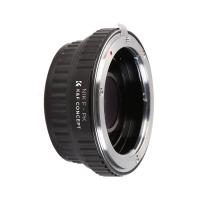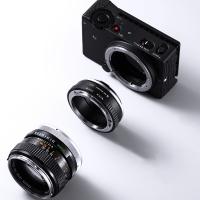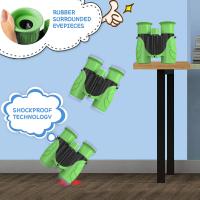What Is Found Underneath A Microscope Stage ?
Underneath a microscope stage, you will typically find the condenser, which is responsible for focusing and directing light onto the specimen. The condenser helps to enhance the contrast and resolution of the image. Additionally, there may be various mechanical components such as knobs or controls for adjusting the position and movement of the stage, as well as a stage clip or holder to secure the specimen in place during observation.
1、 Microscope stage components and their functions
Underneath a microscope stage, several components can be found, each serving a specific function to enhance the functionality and usability of the microscope. These components include the stage itself, stage clips, stage controls, and mechanical stage mechanisms.
The stage is a flat platform where the specimen is placed for observation. It is typically made of glass or metal and is designed to hold the specimen securely in place. The stage clips are used to secure the slide or specimen onto the stage, preventing any movement during observation.
Stage controls are located underneath the stage and are used to move the stage in different directions. These controls allow for precise positioning of the specimen, enabling the user to focus on specific areas of interest. They typically include knobs or buttons for moving the stage horizontally (x-axis) and vertically (y-axis).
Mechanical stage mechanisms are more advanced components found in some microscopes. They allow for controlled movement of the stage, enabling the user to scan the entire specimen systematically. This is particularly useful when examining larger specimens or when conducting detailed observations.
In recent years, advancements in microscope technology have led to the development of motorized stages. These stages can be controlled electronically, allowing for automated scanning and precise positioning of the specimen. Motorized stages are particularly beneficial in research and high-throughput applications, where efficiency and accuracy are crucial.
In summary, underneath a microscope stage, various components work together to provide stability, control, and precise movement of the specimen. These components, including the stage, stage clips, stage controls, and mechanical stage mechanisms, play a vital role in facilitating accurate observations and analysis. With the advent of motorized stages, the field of microscopy has seen significant advancements in automation and efficiency.

2、 Types of specimens commonly observed on microscope stages
Underneath a microscope stage, one can find a variety of specimens that are commonly observed. These specimens can range from biological samples to inorganic materials, providing scientists and researchers with a wealth of information about the microscopic world.
In the field of biology, one may find specimens such as cells, tissues, and microorganisms. Cells are often stained to enhance their visibility and allow for detailed examination of their structures and functions. Tissues, on the other hand, provide insights into the organization and interactions of different cell types within an organism. Microorganisms, including bacteria, fungi, and protozoa, are frequently studied to understand their morphology, behavior, and potential impact on human health.
In addition to biological specimens, microscope stages also accommodate inorganic materials. These can include minerals, crystals, and various types of particles. Geologists and material scientists often examine minerals to identify their composition and study their formation processes. Crystals, with their unique lattice structures, are of particular interest in the field of crystallography. Furthermore, particles such as nanoparticles are becoming increasingly important in nanotechnology research, as scientists explore their properties and potential applications.
It is worth noting that with advancements in technology, the range of specimens observed on microscope stages continues to expand. For instance, researchers now have the ability to study live cells and organisms in real-time using techniques such as fluorescence microscopy and confocal microscopy. This allows for dynamic observations of cellular processes and interactions, providing valuable insights into biological systems.
In conclusion, underneath a microscope stage, one can find a diverse array of specimens, including cells, tissues, microorganisms, minerals, crystals, and particles. These specimens offer a glimpse into the microscopic world and contribute to our understanding of various scientific disciplines.

3、 Techniques for preparing and mounting specimens on microscope stages
Underneath a microscope stage, one can find various components and mechanisms that are crucial for preparing and mounting specimens. These components may vary depending on the type of microscope being used, but there are some common elements found in most microscopes.
One of the main components found underneath a microscope stage is the specimen holder or stage clip. This is where the specimen is placed and secured during observation. The stage clip ensures that the specimen remains in place and allows for precise positioning and focusing.
In addition to the stage clip, there are often mechanical controls underneath the stage. These controls include knobs or levers that allow for the movement of the stage in different directions, such as up and down or side to side. These controls enable the user to navigate the specimen and bring it into focus.
Furthermore, underneath the microscope stage, there may be an illumination system. This system provides the necessary light to illuminate the specimen for observation. It can consist of a light source, such as a bulb or LED, and various lenses or filters to control the intensity and quality of the light.
In recent years, advancements in microscopy techniques have led to the development of motorized stages. These stages can be controlled electronically, allowing for automated scanning and imaging of specimens. Motorized stages offer increased precision and efficiency in specimen preparation and mounting.
Overall, the components found underneath a microscope stage play a crucial role in preparing and mounting specimens for observation. They provide stability, control, and illumination, allowing researchers and scientists to study specimens in detail and gain valuable insights into the microscopic world.

4、 Importance of proper illumination and focus adjustment on microscope stages
Underneath a microscope stage, one can find a variety of components that are crucial for proper functioning and accurate observation. These components include the condenser, diaphragm, and the illuminator. The condenser is responsible for focusing and directing the light onto the specimen, while the diaphragm controls the amount of light that reaches the specimen. The illuminator provides the necessary light source for observation.
Proper illumination is of utmost importance when using a microscope. It ensures that the specimen is adequately lit, allowing for clear and detailed observation. Insufficient illumination can result in a dim image, making it difficult to distinguish fine details. On the other hand, excessive illumination can cause glare and wash out the image. Therefore, finding the right balance is crucial for obtaining accurate and reliable results.
Focus adjustment is another critical aspect of microscope usage. It allows for precise focusing on different layers of the specimen, enabling the observer to examine various details. Proper focus adjustment ensures that the image is sharp and clear, enhancing the accuracy of observations. Without proper focus, important features may be missed or misinterpreted.
In recent years, advancements in microscope technology have further emphasized the importance of proper illumination and focus adjustment. For instance, the introduction of LED illuminators has provided more consistent and adjustable lighting options, allowing for better control over the illumination. Additionally, the development of automated focus adjustment systems has improved the accuracy and efficiency of focusing, reducing the chances of human error.
In conclusion, what is found underneath a microscope stage are components that play a crucial role in proper illumination and focus adjustment. These aspects are essential for obtaining accurate and reliable observations. With the latest advancements in microscope technology, the importance of proper illumination and focus adjustment has been further emphasized, leading to improved results and a better understanding of the microscopic world.







































